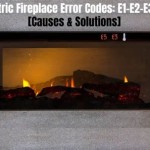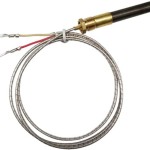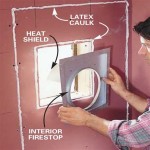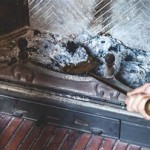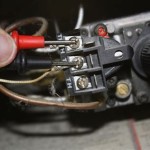Wood Burning Fireplace Inserts in San Diego: A Comprehensive Guide
Wood burning fireplace inserts offer a practical and aesthetically pleasing solution for homeowners in San Diego looking to enhance or revitalize existing masonry fireplaces. These inserts are essentially self-contained heating units that are designed to fit directly into the opening of an existing fireplace, transforming it from a potentially inefficient, purely decorative feature into a source of supplemental or even primary heat. San Diego's moderate climate, with its occasional cool evenings and winter months, makes wood burning fireplace inserts a desirable option for adding warmth and ambiance to homes. This article provides a detailed overview of wood burning fireplace inserts, specifically focusing on their relevance to the San Diego market, covering aspects such as selection, installation, benefits, and maintenance.
Choosing the right wood burning fireplace insert requires careful consideration of several factors. The size of the firebox, the heating capacity required, and the desired aesthetic are paramount. Furthermore, it is crucial to understand local regulations and permitting requirements before proceeding with installation. This article aims to provide the necessary information to make informed decisions regarding wood burning fireplace inserts in the San Diego area.
Key Considerations When Selecting a Wood Burning Fireplace Insert
Selecting the appropriate wood burning fireplace insert involves a multifaceted assessment. Factors such as heating needs, firebox dimensions, efficiency ratings, and aesthetic preferences all play a crucial role in the decision-making process. Understanding these elements ensures that the chosen insert will effectively heat the space and complement the overall design of the home.
Heating Needs and Square Footage: The primary function of a wood burning fireplace insert is to generate heat. The heating capacity of an insert is typically measured in British Thermal Units (BTUs). Determining the appropriate BTU output for a given space is essential for efficient heating. Factors influencing BTU requirements include the square footage of the area to be heated, the insulation quality of the home, and the severity of the local climate. A larger, less well-insulated home in a colder part of San Diego County will require an insert with a higher BTU output than a smaller, well-insulated home closer to the coast.
Firebox Dimensions and Insert Size: Wood burning fireplace inserts are manufactured in a variety of sizes to accommodate different firebox dimensions. Measuring the firebox opening accurately is critical to ensure a proper fit. The height, width, and depth of the firebox should be carefully measured, and these measurements should be compared against the specifications provided by the insert manufacturer. Choosing an insert that is too large will prevent proper installation, while an insert that is too small may not effectively seal the fireplace opening, leading to heat loss and reduced efficiency.
Efficiency Ratings and EPA Certification: The Environmental Protection Agency (EPA) regulates the emissions from wood burning appliances. EPA-certified inserts are designed to burn wood more cleanly and efficiently, reducing air pollution and conserving fuel. The efficiency rating of an insert reflects the percentage of heat generated from the fuel that is actually transferred into the living space. Higher efficiency ratings translate to lower fuel consumption and reduced heating costs. When selecting an insert, it is advisable to prioritize EPA-certified models with high efficiency ratings.
Aesthetic Preferences and Design Considerations: Wood burning fireplace inserts are available in a wide range of styles and finishes, allowing homeowners to choose an insert that complements their existing décor. Options include traditional cast iron models, contemporary steel designs, and models with decorative features such as glass doors and ceramic logs. Considering the overall aesthetic of the room and selecting an insert that enhances the existing design is an important factor in the selection process.
Fuel Type and Wood Availability: While wood is the primary fuel source, some inserts can also burn manufactured logs made from compressed sawdust or other biomass materials. Understanding the available fuel types and their respective burning characteristics is important. Locally sourced, seasoned firewood is often the most cost-effective option in San Diego, but the availability and price of firewood can fluctuate depending on the season and location.
Budget and Long-Term Costs: The initial cost of a wood burning fireplace insert can vary depending on the size, features, and brand. However, it is important to consider the long-term costs associated with owning and operating an insert. These costs may include fuel, maintenance, repairs, and chimney cleaning. A higher-priced, more efficient insert may ultimately prove to be more cost-effective in the long run due to reduced fuel consumption and lower maintenance requirements.
The Installation Process of a Wood Burning Fireplace Insert
Proper installation is paramount to the safe and efficient operation of a wood burning fireplace insert. A qualified professional should perform the installation to ensure compliance with local building codes and manufacturer specifications. The installation process typically involves several key steps, including inspection, preparation, insert placement, and connection to the chimney.
Inspection and Preparation: Before installing a wood burning fireplace insert, a thorough inspection of the existing fireplace and chimney is essential. This inspection should identify any structural issues, such as cracks or deterioration, that may compromise the safety of the installation. The chimney should also be cleaned to remove any creosote buildup, which is a flammable residue that can increase the risk of chimney fires. Any necessary repairs should be completed before proceeding with the installation.
Firebox Preparation: The firebox may require some preparation to accommodate the insert. This may involve removing existing firebricks or other materials to create a level surface for the insert to sit on. The firebox should also be cleaned to remove any debris or ash.
Insert Placement and Securing: The wood burning fireplace insert is carefully placed into the firebox opening. It is crucial to ensure that the insert is properly aligned and securely positioned. Some inserts may require additional supports or brackets to ensure stability.
Chimney Connection: The insert must be connected to the chimney using a stainless steel chimney liner. The liner is designed to provide a continuous, airtight pathway for the exhaust gases to escape. The chimney liner should be properly sized and installed according to the manufacturer's specifications. A properly installed chimney liner is essential for preventing dangerous carbon monoxide leaks and ensuring optimal draft.
Sealing and Insulation: The gap between the insert and the firebox opening should be sealed with a high-temperature sealant to prevent air leaks and maximize efficiency. Insulating the space around the insert can also help to improve heat retention and reduce energy loss.
Testing and Verification: After the installation is complete, the insert should be tested to ensure that it is functioning properly. This may involve lighting a small fire and monitoring the draft and exhaust gases. A carbon monoxide detector should be installed in the vicinity of the fireplace to provide an early warning of any potential leaks.
Permitting and Inspections: San Diego County and various municipalities within require permits for the installation of wood burning fireplace inserts. It is the homeowner's responsibility to obtain the necessary permits and schedule inspections to ensure compliance with local building codes. Failing to obtain permits can result in fines and delays.
Benefits and Maintenance of Wood Burning Fireplace Inserts
Wood burning fireplace inserts provide a range of benefits, including improved heating efficiency, reduced emissions, and enhanced aesthetic appeal. However, regular maintenance is essential to ensure the long-term performance and safety of the insert.
Improved Heating Efficiency: Compared to traditional open fireplaces, wood burning fireplace inserts offer significantly improved heating efficiency. Open fireplaces typically lose a substantial amount of heat up the chimney, while inserts are designed to trap and radiate heat into the living space. This improved efficiency can translate to lower heating costs and a more comfortable indoor environment.
Reduced Emissions: EPA-certified wood burning fireplace inserts are designed to burn wood more cleanly and efficiently, reducing emissions of smoke, particulate matter, and other pollutants. This helps to improve air quality and reduce the environmental impact of wood burning.
Enhanced Safety: Wood burning fireplace inserts are designed with safety features such as sealed doors and controlled air intake, which help to prevent sparks and embers from escaping into the living space. A properly installed chimney liner also helps to prevent dangerous carbon monoxide leaks.
Aesthetic Appeal: Wood burning fireplace inserts can enhance the aesthetic appeal of a room, adding warmth and ambiance. A variety of styles and finishes are available to complement different décor styles.
Regular Maintenance: Regular maintenance is essential to ensure the long-term performance and safety of a wood burning fireplace insert. This includes regular chimney cleaning, inspection of the insert and chimney liner, and replacement of worn parts.
Chimney Cleaning: The chimney should be cleaned at least once a year to remove creosote buildup. Creosote is a highly flammable substance that can accumulate in the chimney over time, increasing the risk of chimney fires. A professional chimney sweep should perform the cleaning to ensure that it is done safely and effectively.
Inspection of the Insert and Chimney Liner: The insert and chimney liner should be inspected regularly for signs of damage or deterioration. Cracks, corrosion, or other issues should be addressed promptly to prevent further damage and ensure safe operation.
Replacement of Worn Parts: Over time, certain parts of the insert, such as gaskets and firebricks, may wear out and need to be replaced. Replacing these parts as needed will help to maintain the efficiency and safety of the insert.
Proper Wood Storage: Storing firewood properly is essential for ensuring that it burns efficiently and cleanly. Firewood should be stored in a dry, well-ventilated location, away from the house and other flammable materials. Seasoned firewood, which has been allowed to dry for at least six months, is the best option for wood burning fireplace inserts.
Local Regulations and Air Quality: San Diego County may have specific regulations regarding wood burning, particularly during periods of poor air quality. It is important to be aware of these regulations and to comply with any restrictions on wood burning. Check with the San Diego County Air Pollution Control District for up-to-date information.
Understanding the nuances of selecting, installing, and maintaining a wood burning fireplace insert in San Diego is paramount to maximizing its benefits and ensuring safe operation. Careful planning and adherence to best practices will provide years of warmth and enjoyment.

Fireplace Insert We Install Gas Wood Electric Inserts

Wood Inserts Sweep S Luck Chimney Dryer Vent And Air Duct Cleaning Company Serving San Diego Lake Arrowhead

Pellet Inserts Sweep S Luck Chimney Dryer Vent And Air Duct Cleaning Company Serving San Diego Lake Arrowhead

Gas Fireplace Inserts And Installations Family Owned Operated

Top 10 Best Gas Fireplace Inserts In San Diego Ca Updated 2024 Yelp

Fireplaces Plus San Diego

San Diego Fireplace Design Center Capo Fireside

Fireplace Accessories San Diego Remodel

Ashford 25 Wood Insert Stove In Chestnut Enamel Capo Fireside

San Diego Location Information
Related Posts

